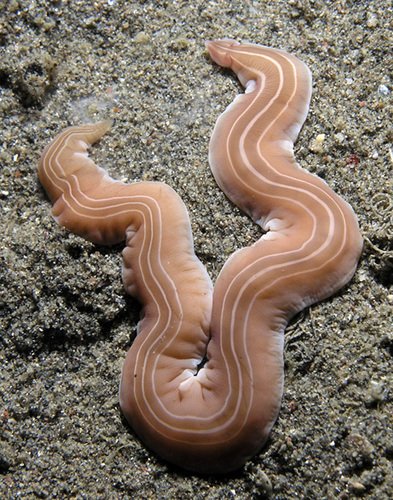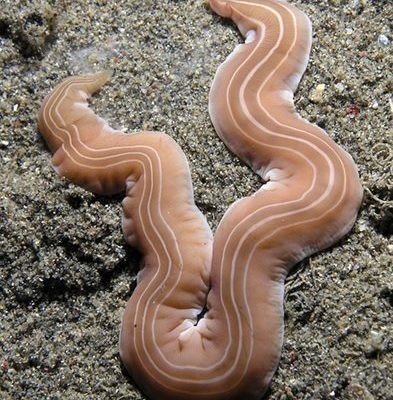
Ribbon worms, also known as nemerteans, are long, slender creatures that can really make a splash in their environment—quite literally! Imagine a soft, squishy noodle that contributes to the health of an entire ecosystem. They may be small in size, ranging from a few centimeters to several meters long, but their impact is anything but minor. Let’s dive deeper into how ribbon worms contribute to the rich tapestry of life in estuarine environments.
What Are Ribbon Worms?
Before we explore their role in biodiversity, let’s take a moment to get to know ribbon worms a bit better. These creatures belong to the phylum Nemertea and are found in marine, freshwater, and even terrestrial environments. Their bodies are often colorful, ranging from shades of pink to brown and green, which can make them quite captivating to observe.
One of the standout features of ribbon worms is their **proboscis**—a long, tubular structure that they can evert (or extend) to capture prey. Think of it as a built-in fishing line. This structure allows them to be effective predators, feeding on a variety of small organisms like crustaceans and polychaete worms. As you can imagine, this predator-prey dynamic helps keep populations balanced in the ecosystem.
Interestingly, ribbon worms can also reproduce in fascinating ways. They can have both sexual and asexual reproduction, which makes them quite adaptable. This ability to thrive in different conditions is one of the reasons why they play such a vital role in estuarine ecosystems.
The Role of Ribbon Worms in Food Webs
Now that we know what ribbon worms are, let’s talk about their role in the food web. In an estuary, food webs are intricate networks that connect various organisms. Ribbon worms act as both **predators** and **prey**—a dual role that’s crucial for maintaining the balance of life in these environments.
As predators, they help control the populations of smaller animals. By feeding on crustaceans and other invertebrates, ribbon worms help prevent any one group from dominating the ecosystem. This predation is essential because it allows for a diverse range of organisms to coexist without any single species overwhelming the others.
At the same time, ribbon worms become food for larger predators, such as fish and birds. This connection forms an important pathway for energy transfer within the estuary. You might say they’re like the middle layer in a delicious sandwich—keeping everything nicely stacked and balanced.
Enhancing Nutrient Cycling
One of the most fascinating aspects of ribbon worms is how they contribute to **nutrient cycling** in estuarine ecosystems. When ribbon worms consume organic matter, they help break it down and release nutrients back into the water. This is vital because plants, algae, and other organisms need these nutrients to thrive.
Imagine the ribbon worm as nature’s recycler. By feeding and excreting, they help convert organic materials into forms that other organisms can use. This process supports the growth of phytoplankton, which forms the base of the food chain in estuaries. Without healthy phytoplankton, the entire ecosystem could suffer.
Additionally, ribbon worms burrow into sediments, aerating the soil and mixing organic materials. This activity not only enhances soil health but also improves water quality, creating a better environment for a wide range of aquatic life.
Habitat for Other Species
Ribbon worms don’t only enrich their surroundings; they also provide habitats for other species. Their burrowing behavior creates spaces within the sediment that can be utilized by smaller organisms. This means other creatures can find shelter and protection from predators, helping to increase biodiversity in the estuary.
Think of ribbon worms as the architects of their environment. They dig tunnels and create intricate networks that can support a variety of life. These spaces can host microorganisms, larvae, and even small fish that come looking for a safe haven. By creating a more diverse habitat, ribbon worms enhance the overall complexity of the ecosystem.
Indicators of Ecosystem Health
The presence and population health of ribbon worms can indicate the overall health of an estuarine ecosystem. They thrive in environments rich in nutrients and biodiversity, so their abundance often reflects a balanced ecosystem. Conversely, a decline in ribbon worm populations may signal problems, such as pollution or habitat degradation.
Monitoring ribbon worm populations can help scientists and conservationists assess the impacts of human activity on estuarine health. If the ribbon worms start to disappear, it can be a warning sign that something isn’t quite right in the ecosystem, prompting further investigation.
Here’s the thing: by paying attention to these worms, we gain valuable insights into the well-being of the entire estuarine environment.
So, there you have it! Ribbon worms may not be the most glamorous creatures in the world, but their contributions to biodiversity in estuaries are invaluable. From maintaining food webs and enhancing nutrient cycling to providing habitats and serving as indicators of ecosystem health, these worms truly deserve a spotlight.
Honestly, the next time you’re by an estuary, take a moment to appreciate the unseen work done by ribbon worms. They quietly play their part in supporting one of the most vibrant ecosystems on our planet. By understanding and protecting these fascinating creatures, we can help ensure that our estuaries remain rich in life for generations to come.

